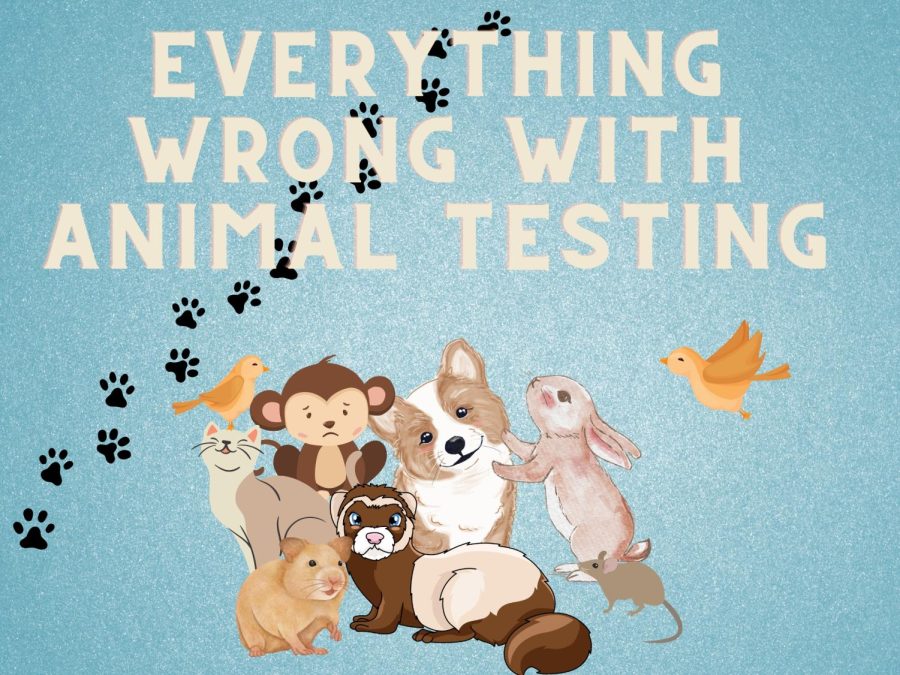We can do better than animal testing
Animal testing, a cruel method dating back to 500 B.C. still continues on today. There are several flaws that need to be brought to attention.
As I scroll through my phone on what seems like a typical day, I come upon a short film regarding animal testing called, “Save Ralph.” My heart sinks as I watch and find out about the inhumane torture various animals go through for cosmetic, agricultural, pharmaceutical and many other purposes. Some people, including myself, used to think of animal testing consisted of researchers simply applying make-up on furred beings to test their safety, when the actual reality is much darker.
Animal experimentation refers to the scientific use of rabbits, hamsters, dogs, cats, monkeys and numerous other animals in laboratories to determine the toxicities, effectiveness and safety of any medical, cosmetic or other product pertaining to human use. A few of the cruel tests consist of animals being forced to inhale and be injected with toxic chemicals, be exposed to infectious illnesses, endure severe burns and be immobilized in restraint devices for many hours at a time.
Yearly, an alarming number of more than 115 million animals are tested worldwide in such manners that ultimately lead to these beings’ death. Animal experimentation is often proved to be inefficient in predicting a cosmetic or medicine’s potential effects and efficacy. It needs to be taken into account that since animal species differ so greatly from us biologically, it makes it highly unlikely to yield results that accurately correspond to people. In fact, it has been estimated by the Food and Drug Administration (FDA) that 96 percent of all drugs that are shown to be safe and effective in animal tests fail in human clinical trials. It appears as though millions of animals are dying for no reason.
We can all also play a part in lowering the rates of animal experimentation taking place by turning to cruelty-free products while encouraging others to purchase them as well.
Also, diseases and chemicals that are artificially induced in animals are never nearly identical to those that naturally occur in humans. Illnesses such as Parkinson’s disease, specific types of cancer, heart diseases and myriads more cannot generally be found in animals. So, forcing them to undergo the disease to mimic how a person would suffer from it does not make any sense.
Additionally, animal testing is particularly expensive; approximately 14.5 billion dollars per year is put into these experiments by the federal government. The process for completing testing on an animal can also be lengthy, with some taking up to months or even years to properly analyze.
There are alternative practices that can be set into place in laboratories that do not deal with testing on animals; these involve 3-Dimensional printing, using human cells and tissues and computer models. Not only are these procedures more efficient since they are quicker and less costly, but they permit higher accuracy of the effects and efficacy of a certain product. In turn, this makes the products safer for us to use.
I know that the scientific research field can do much better than animal testing by gradually resorting to alternative methods. We can all also play a part in lowering the rates of animal experimentation taking place by turning to cruelty-free products while encouraging others to purchase them as well. We need to help and give these voiceless animals a voice against this cruel procedure.
For a list of cruelty-free brands, visit: https://ethicalelephant.com/cruelty-free-brand-list/














